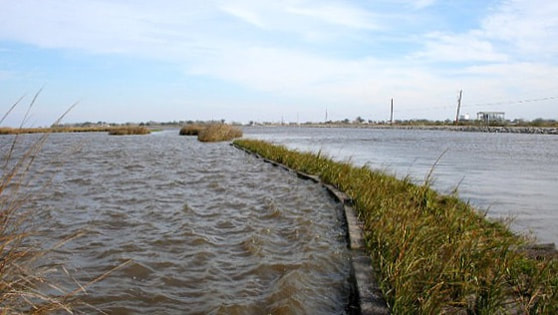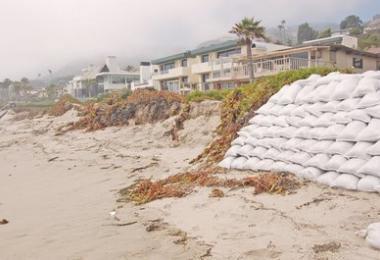How Shore Protect Team can Save You Time, Stress, and Money.
Table of Contents5 Simple Techniques For Shore Protect TeamFacts About Shore Protect Team RevealedThe 8-Minute Rule for Shore Protect TeamThe Basic Principles Of Shore Protect Team The 7-Minute Rule for Shore Protect TeamOur Shore Protect Team StatementsExcitement About Shore Protect Team
Decrease in building value: As the location tourist is impacted by disintegration, so after that is the economy. Purchasers are much less most likely to look for a coastline house that can be damaged at any kind of minute by the impending flooding and disintegration emergency. Consequently, residential or commercial property value can go down profoundly and impact the whole area.Whether a beach is simply small and crowded or has to close entirely for the safety and security of the ecosystem and close-by homes, this substantially influences tourism. In turn, neighborhood economies are impacted (https://imageshack.com/user/shrprtcttm). Risk of injury: The enhanced danger of flooding and structural failings creates an increased threat of injury to nearby visitors and community participants

is home to even more than 84,240 miles of coast with 41% of it revealed to the open sea. Coastal engineers are in fee of safeguarding the shore against changes by lessening the damaging effects of both natural and man-made events. Coastline stabilization is straight pertaining to their job. Waterfront hotels: Since shoreline disintegration impacts tourism, it affects the success of beachfront resorts.
8 Easy Facts About Shore Protect Team Shown
Coastal industrial businesses: No visitors implies no organization. Coastal state parks: State parks that exist along coastlines are at danger of damages.
Hard stabilization uses man-made structures as protection to manage erosion. Many types of difficult stablizing like seawalls and sheet steel are not suitable for shoreline stabilization.
The smart Trick of Shore Protect Team That Nobody is Discussing
There's also insufficient evidence of their efficiency depending on the kind of coastline and local conditions. Difficult stabilization strategies tend to be harder to set up and don't match the all-natural visual, sticking out like an aching thumb and hurting neighborhood ecosystems in lots of circumstances. Coastline sustenance is the procedure of adding lost sand and sediment back to coastlines after erosion has happened.
TrapBags aid in the process of coastline nourishment by safeguarding all-natural ecological communities and enabling plants to grow. They're: Eco pleasant: You can make use of native dirt both to border and to fill up the TrapBags.

Not known Details About Shore Protect Team
They can also be mounted without any kind of heavy machinery. Inexpensive: TrapBags are excellent for both small and big areas of coastline.
Incorporated with a high construction price, this has actually caused increasing usage of various other soft engineering seaside management alternatives such as coastline replenishment. Seawalls are constructed from numerous products, many commonly strengthened concrete, rocks, steel, or gabions. Various other feasible construction materials consist of vinyl, wood, light weight aluminum, fiberglass composite, and eco-friendly sandbags made from jute and coir. The suitable seawall style counts on location-specific facets, consisting of surrounding erosion procedures. There are 3 main types of seawalls: vertical, bent, stepped, and piles (see table below).
Natural obstacles, such as reef and mangrove forests, stop the spread of tsunamis and the flow of coastal waters and minimized the flooding and surge of water. A cost-benefit technique is a reliable method to figure out whether a seawall is ideal and whether the benefits are worth the expense.
An Unbiased View of Shore Protect Team
A seawall is a static attribute which can contrast with the dynamic nature of the coast and restrain the exchange of debris between land and sea. The table listed below summarizes some positive and adverse impacts of seawalls which can be utilized when contrasting their effectiveness with various other seaside monitoring options, such as coastline nourishment. [] Advantages and downsides of seawalls according to Short (1999) Benefits Drawbacks Long term solution in comparison to soft coastline nutrients.

This can create beaches to dissipate, providing them pointless for coastline goers. Typically, seawalls can be a successful way to manage seaside disintegration, but just if they are built well and out of materials that can stand up to the force of ongoing wave power.
The Buzz on Shore Protect Team
Combined with a high construction expense, this has caused raising usage of various other soft design coastal administration choices such as beach replenishment. Seawalls are constructed from numerous materials, most typically reinforced concrete, rocks, steel, or gabions. Other feasible construction materials consist of plastic, timber, light weight aluminum, fiberglass composite, and naturally degradable sandbags made of jute and coir. The appropriate seawall layout counts on location-specific elements, including surrounding disintegration procedures. There are three major sorts of seawalls: vertical, bent, stepped, and piles (see table listed below). A record released by the United Nations Setting Programme (UNEP) suggests that the tsunami of 26 December 2004 triggered much less damage in the areas where all-natural obstacles existed, such as mangroves, coral reefs or coastal plants.
All-natural barriers, such as coral reefs and mangrove forests, protect against the spread of tidal waves and the flow of seaside waters and reduced the flood and surge of water. A cost-benefit method is a reliable way to figure out whether a seawall is appropriate and whether the advantages deserve the cost.
More About Shore Protect Team
A seawall is a static function which can contravene the dynamic nature of the shore and hamper the exchange of debris in between land and sea. The table listed below sums up some positive and adverse impacts of seawalls which can be made use of when contrasting their efficiency with other coastal monitoring options, such as coastline nourishment. [] Advantages and downsides of seawalls according to Short (1999) Advantages Downsides Long-term option in contrast to soft coastline sustenance. commercial bulkhead.

This can trigger coastlines to dissipate, providing them useless for coastline goers. Typically, seawalls can be an effective means to manage coastal disintegration, however only if they are constructed well and out of materials that can endure the pressure of recurring wave power. Some understanding is needed of the coastal processes and morphodynamics certain to the seawall place.